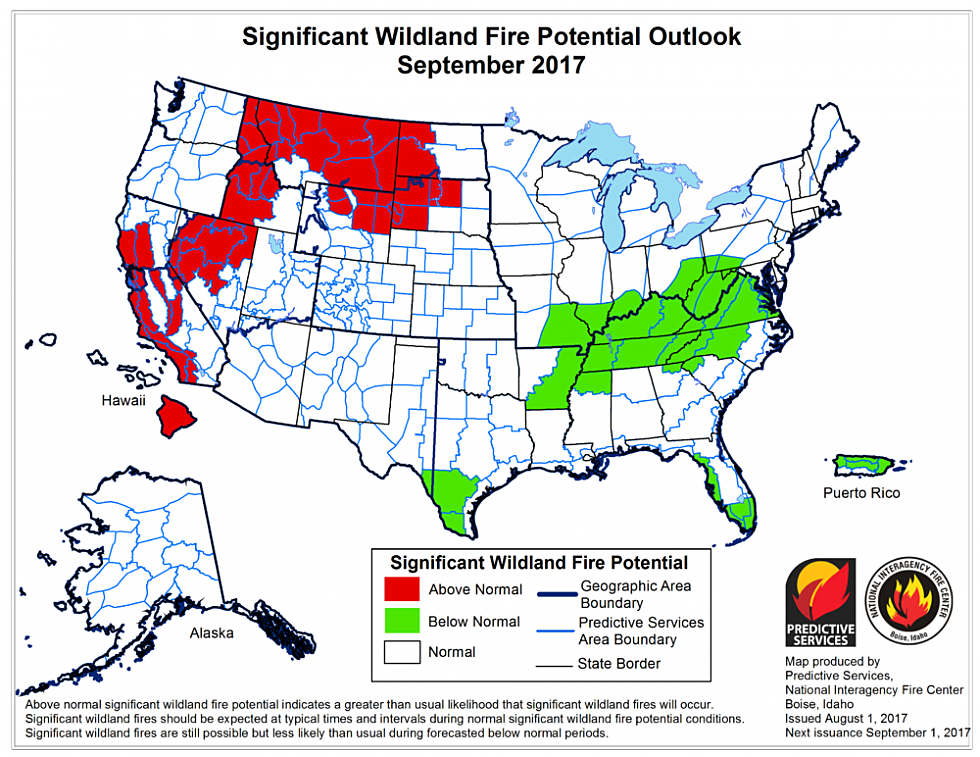
Dubious distinction: Montana the epicenter of nation’s 2017 summer drought
If you feel parched, the statistics say you’re justified.
Montana has the most intense drought conditions in the nation, according to the latest U.S. Drought Monitor published by NOAA. And conditions aren’t expected to improve in September, either for the drought or for the wildfire danger.
In fact, over the past month, “severe,” “extreme” and “exceptional” drought conditions marched westward across Montana – while much of the rest of the nation saw improvements or even above-normal precipitation.
Nationwide, 25 percent of the land mass is considered somewhere between "abnormally dry" and "exceptional drought." In Montana, that figure is 97 percent.
In the past month, “drought continued to expand in western Montana where the extremely dry weather pattern has persisted,” said NOAA climate scientist Chris Fenimore. “It was reported that 98 percent of the topsoil moisture in Montana was rated very short to short and 90 percent of subsoil moisture was rated very short to short.”
In addition, the U.S. Department of Agriculture reported that 67 percent of Montana’s pasture and range land was in poor to very poor condition. That prompted the state’s livestock producers to sell their herds three to four weeks ahead of normal – before conditions deteriorated even further.
Large and uncontrollable wildfires, of course, were the storyline in western Montana, and Fenimore made special note of the 37,844-acre Lolo Peak fire, which started with a lightning strike July 15 and has exhibited extreme fire behavior and significant wind- and heat-driven runs since.
One firefighter died on the line of that fire when he was hit by a falling snag, and others have been injured. Two homes were destroyed when firefighters lit a backburn hoping to create a black safety zone for the neighborhood, only to see that fire race to the ridgeline before it could be calmed.
Fenimore estimated that just over 888,000 Montana residents now live within the drought area, nearly the entire population.
Eight counties in northeast Montana lie within NOAA’s “exceptional drought” category this summer, or nearly 12 percent of the state’s acreage. Last summer, no county fell into the “exceptional drought” category, the driest designation on the Drought Monitor’s map.
Thirty-four percent of Montana has either “extreme” or “exceptional” drought conditions, including all of northeastern Montana and most of the southeastern counties.
Ninety-seven percent of the state’s land area is abnormally dry and experiencing some level of drought.
In western Montana, 10 counties are experiencing “severe” drought conditions. None fell into that category last summer when just 7 percent of the entire state was considered in “severe” straits.
The forecast for September is not what wildland firefighters or communities in western Montana wanted to hear.
In a report, the National Interagency Fire Center in Boise, Idaho, said fall 2017 is “expected to exhibit overall warmer and drier than average conditions for the Western states and Alaska.”
The Northern Rockies forecast shows an “above normal significant large fire potential across northern Idaho, the entirety of Montana except for the southwest corner, and western North Dakota in September.”
And then?
“In October and November, the above normal potential will be scaled back to being northeastern Montana through western North Dakota,” according to the NIFC report.
Precipitation across the region continues to be well below average, a trend that goes back to May.
All the heat and drought allowed fine fuels at middle and higher elevations to cure in early to mid-July, NIFC’s report reminded. Lower elevations cured rapidly at an even earlier date.
September’s conditions are expected to remain “favorable for the above normal significant fire activity to continue,” according to the interagency fire team. “Areas with the greatest potential for significant large fire activity will be the grasses and rangelands of the Pacific Northwest east of the Cascades, the lower and middle elevations across California, and most of the Northern Rockies region.”
In fact, even if average late-summer precipitation returned, “the severe drought conditions in place will keep fire potential elevated through at least September, possibly into October,” according to the forecast.
So prepare for an even longer haul, western Montana. And in layman’s terms – and the mantra of diehard skiers everywhere, “Pray for snow.”
